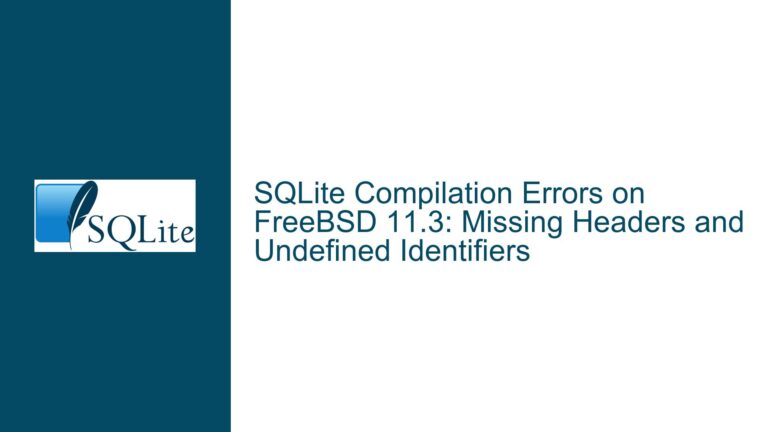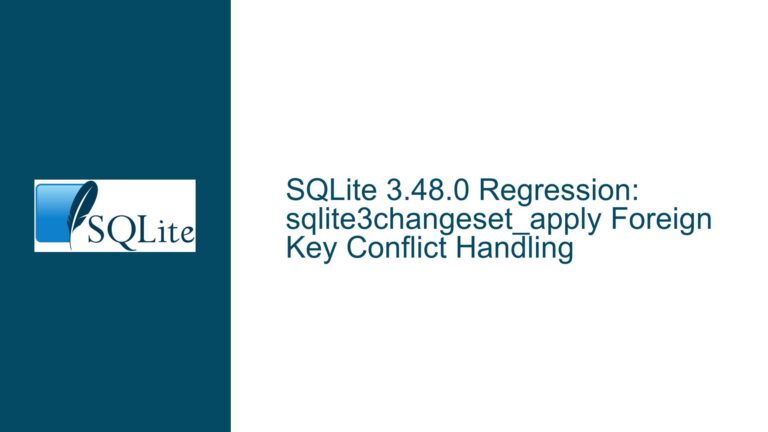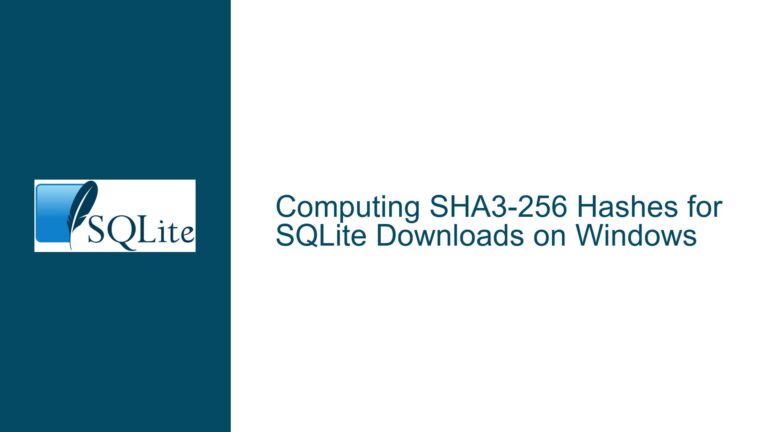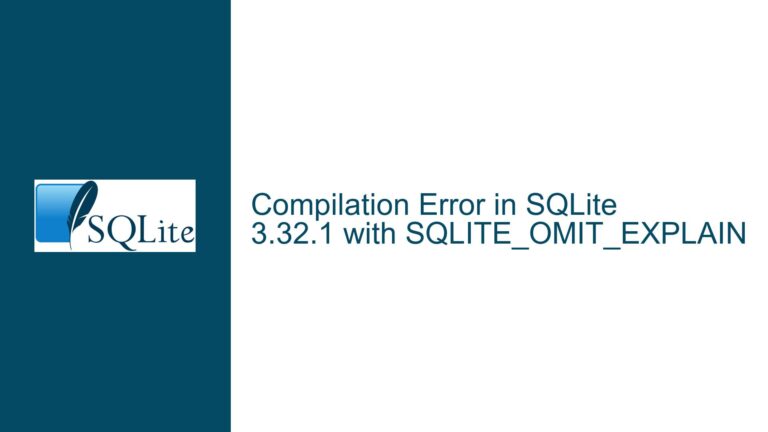Using VACUUM INTO in Triggers: Risks, Limitations, and Workarounds
Understanding the Use Case for VACUUM INTO in Triggers
The core issue revolves around the desire to use the VACUUM INTO command within SQLite triggers. The idea is to automate database maintenance tasks, such as creating backups or optimizing storage, directly within the database engine. For example, a user might want to create a backup of a database before deleting records or perform a VACUUM operation to reclaim storage space after a large deletion. The goal is to make the database a self-contained unit that handles these tasks automatically, reducing the need for external scripts or manual intervention.
However, this approach faces significant challenges due to the nature of the VACUUM command and the limitations of SQLite’s transactional model. The VACUUM command is a heavy operation that rewrites the entire database file, which can be time-consuming and resource-intensive. Additionally, VACUUM cannot be executed within a transaction, which complicates its use in triggers since triggers are inherently tied to the transaction of the statement that invokes them.
The discussion also highlights a workaround involving a user-defined function (UDF) that attempts to execute VACUUM INTO from a separate database connection. This approach aims to bypass the transactional limitations by creating a new connection to the database and performing the VACUUM INTO operation outside the context of the original transaction. While this workaround shows promise, it introduces its own set of challenges, such as handling in-memory databases and ensuring proper resource management.
Why VACUUM INTO in Triggers is Problematic
The primary issue with using VACUUM INTO in triggers stems from the nature of the VACUUM command itself. VACUUM is a non-transactional operation, meaning it cannot be executed within the context of a transaction. This is because VACUUM rewrites the entire database file, which is incompatible with SQLite’s transactional guarantees. When a trigger is fired, it operates within the transaction of the statement that invoked it. Attempting to execute VACUUM or VACUUM INTO within this context would violate SQLite’s transactional model, leading to errors or undefined behavior.
Another concern is the performance impact of VACUUM. The operation is highly resource-intensive, involving significant disk I/O and potentially large amounts of memory. Executing VACUUM within a trigger could lead to severe performance degradation, especially if the trigger is invoked frequently or on large datasets. For example, in a scenario where a trigger is fired for each row deleted in a bulk operation, the repeated execution of VACUUM could render the database unusable for extended periods.
Additionally, there are risks associated with backing up the wrong data. If a VACUUM INTO operation is triggered by a delete operation that is later rolled back, the backup created by VACUUM INTO would reflect a state of the database that was never committed. This could lead to confusion and data integrity issues, especially in mission-critical applications where accurate backups are essential.
The workaround involving a UDF introduces further complexity. While the UDF attempts to execute VACUUM INTO from a separate connection, it must carefully manage resources to avoid memory leaks and ensure proper error handling. The UDF also faces challenges when dealing with in-memory databases, as these databases are private to the connection that created them and cannot be accessed by other connections. This limitation makes it difficult to use the UDF for in-memory databases, which are often used for testing or temporary data storage.
Addressing the Challenges: Solutions and Best Practices
To address the challenges of using VACUUM INTO in triggers, it is essential to consider alternative approaches that achieve the desired functionality without violating SQLite’s transactional model or compromising performance. One such approach is to decouple the VACUUM operation from the trigger and instead handle it as a separate, scheduled task. This can be done using external scripts or job schedulers that periodically execute VACUUM or VACUUM INTO based on predefined criteria, such as time intervals or database size thresholds.
For scenarios where immediate backups are required, consider using SQLite’s backup API, which allows for creating backups without the overhead of VACUUM. The backup API can be invoked from an external application or script, ensuring that backups are created outside the context of any ongoing transactions. This approach provides greater control over the backup process and avoids the performance penalties associated with VACUUM.
If the use of a UDF is deemed necessary, ensure that the function is thoroughly tested and handles all edge cases, including in-memory databases and resource management. The UDF should include robust error handling to detect and report issues such as failed connections or disk full errors. Additionally, consider using SQLite’s memdb VFS for in-memory databases that need to be shared across multiple connections within the same process. This allows for more flexible handling of in-memory data and avoids the limitations of private :memory: databases.
Finally, when designing database maintenance strategies, weigh the benefits of automation against the potential risks and performance impacts. While automating tasks like backups and storage optimization can simplify database management, it is crucial to ensure that these tasks do not interfere with the database’s primary function of serving data to applications. By carefully planning and implementing these strategies, it is possible to achieve a balance between automation and performance, ensuring that the database remains reliable and efficient.
In conclusion, while the idea of using VACUUM INTO in triggers is appealing for automating database maintenance tasks, it is fraught with challenges due to SQLite’s transactional model and the resource-intensive nature of VACUUM. By exploring alternative approaches and carefully managing the complexities of UDFs and in-memory databases, it is possible to achieve similar functionality without compromising the integrity or performance of the database.






